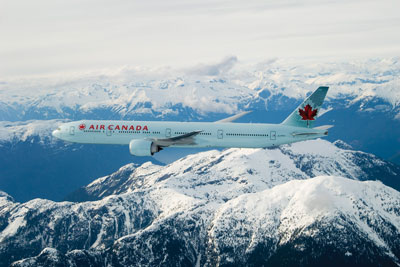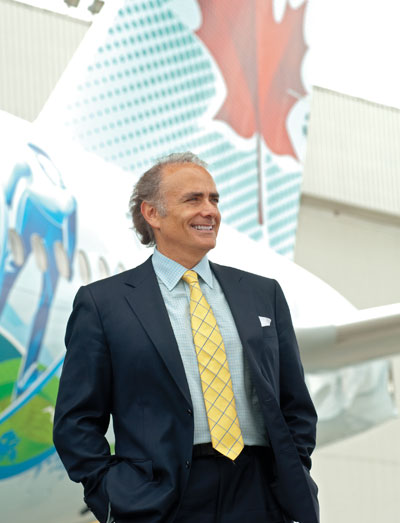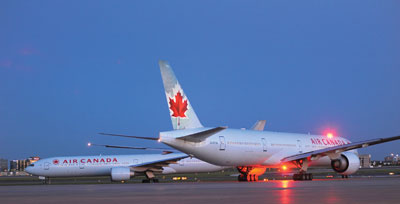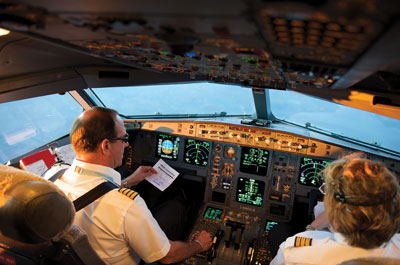
Features
Airlines
Calin Rovinescu’s entrepreneurial legacy
When you hear the words entrepreneurship and innovation in the context of airlines, it typically refers to those who have recently started an airline,” Calin Rovinescu, the chief executive of Air Canada told Wings in a recent interview.
September 13, 2012 By David Carr
When you hear the words entrepreneurship and innovation in the context of airlines, it typically refers to those who have recently started an airline,” Calin Rovinescu, the chief executive of Air Canada told Wings in a recent interview. “This is the thing most people don’t understand. David Neeleman who founded JetBlue is a very strong entrepreneur. WestJet’s Clive Beddoe is a very strong entrepreneur. However, if you take a legacy structure that has 75 years of history and needs to have a different model to operate as opposed to simply being destroyed – the drivers in that transformation are going to have to be just as entrepreneurial and innovative.”
 |
|
| While Air Canada has its own agenda, some of those steps will be defined by what the competition is doing, including WestJet’s low-cost carrier. Photo: Air Canada
|
Air Canada turned 75 this September and Rovinescu has been at the centre of two of the airline’s most recent course altering events: privatization in the late 1980s and the airline’s exit from bankruptcy protection in 2004. Now in the executive seat, the Montreal lawyer is looking for the hat trick to pull an airline struggling with high operating costs, a legacy labour culture and challenging pension obligations even with its toughest low-cost competitors.
Since emerging from bankruptcy protection, Air Canada has tacked toward the entrepreneurial. Most notably a ‘tango’ with two budget airlines from 2001 to 2004. The Tango brand was morphed into the current fare structure. Sitting in a wood paneled room alongside a wall filled with models of Star Alliance partners at Air Canada’s Montreal headquarters, Rovinescu defends Tango as an experiment that paid off.
“We were the first full-service airline to try Tango. It was our form of R&D. It showed us that there is a market that understands fare differentiation and product segmentation and is prepared to pay a base fare and add a certain layer of service whether it is food or anything else you are willing to offer.”
In 2009, Air Canada was one of the world’s top 10 performers in ancillary revenue, collecting more than $774 million or $23 per passenger. The airline no longer posts a dollar figure, but in 2011, ancillary revenue from added services such as seat selection, baggage adjustment fees and onboard amenities grew 18 per cent to about $1.1 billion, or approximately 10 per cent of total revenue.
 |
|
| Air Canada president/CEO Calin Rovinescu is looking to pull an airline struggling with high operating costs, a legacy labour culture and challenging pension obligations even with its toughest low-cost competitors. Photo: Air Canada
|
Innovation in both the cabin and back office resulted in further gains. At this year’s Farnborough International Air Show, Air Canada was named Skytrax ‘Best International Airline in North America’ for an unprecedented third year. Tighter fleet utilization has enabled the company to boost international capacity by 6.6 per cent. Better scheduling and improved relations with airport management at its Toronto hub have resulted in healthy increases in transfer traffic between U.S. and international destinations through Canada.
Since 2009, Air Canada has more than doubled so-called sixth freedom traffic through Pearson International Airport.
“Our historic approach has been to market to our top tier customers in Canada,” says Rovinescu. “Now we are taking it a step beyond. We are not just marketing ourselves as an airline competing for Canadians. We are creating an international gateway, which takes network planning, marketing and constant conversations with airport authorities and regulators. A lot has to come together.”
What has not yet come together is a cost structure to enable the airline to make money. A cost transformation program has stripped $530 million in non-labour costs out of the operation through initiatives such as crew pairing protocols, tighter RFP processes and new supplier contracts. Rovinescu insists these are not “one off” savings. Even so, Air Canada lost $249 million on record revenue of $11.6 billion in 2011. The picture was no brighter in the second quarter of 2012 with a loss of $96 million, more than twice the year-over-year loss for the same three-month period, despite easing fuel prices.
“We have an amazing franchise. We have a great product and a great brand. We also have a very challenging cost structure and pension plan. But we can’t afford to sit still and hope that the rest of the world will accept we have a high cost structure.”
Rovinescu insists the airline is on track to sustainable profitability and attributes the Q2 loss to several factors including labour disruptions and the unexpected bankruptcy of Aveos, the company’s largest maintenance supplier. “That was a real curve ball that was thrown at us. It was a very awkward time.”
The Aveos collapse sent Air Canada scrambling for available maintenance slots around the world. It also exposed the weak under-belly of airline regulation in Canada. The Air Canada Participation Act was intended to placate opposition to privatization by laying out operational guarantees such as a floor for the percentage of fleet maintenance to be performed in Montreal, Toronto and Winnipeg.
 |
|
| Innovations such as improved fleet utilization have enabled Air Canada to boost international capacity by 6.6 per cent. Photo: Air Canada
|
“You have 25 years of lapsed time since privatization,” says Rovinescu. “You have 25 years of the low cost evolution . . . of maintenance going off shore . . . of events like 9-11, which changed the industry forever, versus legislation that has long since lived out its usefulness. We do what we need to comply. But in a bigger policy perspective, an industry that collectively earns 0.5 per cent should not be seen as an easy source of social policy and of keeping other industry’s alive.”
Recent arbitrated labour agreements will reduce cost pressures on Air Canada. Changes to the pension plan are also expected to ease a $4.4 billion pension shortfall by more than $1 billion. Scoping provisions in a contract with the Air Canada Pilots Association (ACPA) provides freedom to transfer aircraft to Air Canada Express partners such as Jazz and a planned low-cost subsidiary.
Rovinescu is justifiably proud of Air Canada’s 26,000 employees and understands that labour peace – nudged along by the threat of back to work legislation – has come at a price. He insists it should not have come to this and it is here that passion enters the conversation.
“Labour relations are a function of fair negotiation. One thing I have no sympathy for is a situation where you negotiate with a union, sign a tentative agreement representing six or nine months work and some group inside the union decided to be the opposition party and undermines the process. We negotiated in good faith with the CAW, CUPE, ACPA and the machinists, and in each case reached a tentative agreement. Then you have groups of disgruntled union representatives who seek to undermine what their colleagues agreed to and start all over again.”
It does speak to the professionalism of Air Canada employees that – a handful of disruptive airport terminal protests notwithstanding – bad blood with management did not spill over into the flight deck or cabin.
The new contracts represent a turning point for the future of the airline. They have certainly helped lay the foundation for an inevitable shakeup in the relatively calm Canadian air transport landscape, not experienced since short-lived, deep discounter Jetsgo inserted itself onto the scene more than 10 years ago. In 2013, Air Canada will be protecting its brand against a two-pronged strategy by WestJet to launch a yet unnamed regional airline to go head-to-head with Air Canada Express, while making a more aggressive play for premium traffic.
“The competition that comes from low-cost carriers is very appealing,” says Rovinescu. “That is because every day of the week somebody is doing something new. That forces us as an organization to be more competitive.” To underscore the point, WestJet recently announced plans for a premium package including added leg room in the first four seating rows, priority boarding and other amenities.
 |
|
| It speaks to the professionalism of Air Canada employees that bad blood with management did not spill over into the flight deck or cabin. Photo: Air Canada |
Air Canada is also setting the stage to launch its own low-cost international airline aimed primarily at the leisure market. Rovinescu is neither concerned nor apologetic over the pending shake up. “The market will always evolve and we don’t plan to sit on our hands and watch the grass grow as it evolves. We need to respond to WestJet’s plans with respect to regional traffic. In terms of leisure markets and those markets that have evolved to the lower cost carrier environment – we also think we have a role to play.”
Air Canada Express adjusted its inflight product to include a complimentary light meal and bar service to compete with niche carrier Porter Airlines on its Montreal route out of Toronto City Centre Airport. The airline will remain competitive in the regional market including potential fleet upgrades by transferring its 15 Embraer 175s to Air Canada Express while retiring aging Bombardier CRJ100 and 200s and replacing them with larger 700s and 900s.
It is expected that up to 30 Airbus A320 and 20 Boeing 767s will be off-loaded to the low-cost airline. The bulk of the 767s will be transferred as leases expire and Air Canada starts taking delivery of its Boeing 787s in 2014.
Air Canada is also re-evaluating its narrow body fleet and is expected to make some announcements next year, including phasing out the Embraer 190s, which are too large to be transferred to Air Canada Express carriers and making a decision on a new generation twinjet.
Still, launching the low-cost carrier will be Air Canada’s single largest undertaking in 2013. Rovinescu describes it as a “growth opportunity” that will allow the airline to restore service to vacation markets that were no longer competitive because of a higher cost structure and open new leisure services. “We need to serve some of the sun destinations and pure leisure destinations with a product that is different from the competition – a full service product.”
More than 10 years after Air Canada first pioneered the concept with Tango and Zip, low-cost subsidiaries of legacy airlines are about to regain some altitude. Iberia Express has unit costs 30 per cent below its troubled parent and is reported to be flying at a profit three months after it was launched. Lufthansa and Singapore Airlines are considering similar low-cost models.
“All legacy carriers have to consider some strategy to deal with low-cost carriers,” says Rovinescu. “Singapore Airlines – one of the best brands in the world – is forming a low cost carrier. Why? Because of the pressure.”
Air Canada will make another leap to lower a cost structure in 2014 when the first of 37 Boeing 787 Dreamliner aircraft arrive. The airplanes have approximately 30 per cent lower fuel and maintenance costs than the 767s and Airbus A330s it will replace, with a seating capacity and range that will enable the airline to connect more cities point-to-point, expand into emerging markets in China, India and Latin America and increase frequency to popular destinations.
Chronic delays in 787 deliveries caused the airline to put some planned routes on hold, but also forced it to become more efficient. “It was not a bad time to sit it out for a couple of years, says Rovinescu. From a perspective of culture and transformational change, the delay was a good thing. When I arrived in 2009, we had a lot of challenges. What we didn’t need was a $4.5 billion financing requirement for new aircraft.
Obviously some direct routes had to be placed on the backburner. But it enabled us to become more efficient using our existing assets. We managed to grow capacity in each of the last three years basically off the same fleet.”
Seven 787s are scheduled to be handed in over 2014. The remaining 30 aircraft will arrive between 2015 and 2019. Rovinescu won’t discuss where the first airplanes will be deployed or whether the airline is seeking compensation from Boeing for late deliveries. He does admit, however, that he would prefer to have the 787 in 2013 rather than 2014.
As Air Canada struggles to lower its cost structure, it’s easy to question whether bankruptcy delivered the fix the airline needed, or just kicked structural problems further down the road. “You can’t snap your fingers and fix everything over night,” says Rovinescu. “We had some structural fixes and we were able to start weaning people off the notion of defined benefits in perpetuity. Some things were too difficult to accept in the social environment we had at the time. We also had fleet rationalization – getting brand new airplanes like the Boeing 777s and Embraer and taking out less fuel-efficient aircraft like the 747. If I look at this continuum of 25 years dating back to privatization, we have had a lot of structural change and a lot of good positive steps. Privatization was the first step. Restructuring was the second step. There will be a third step, a fourth step and a fifth step.”